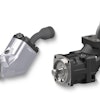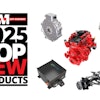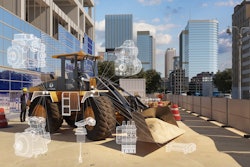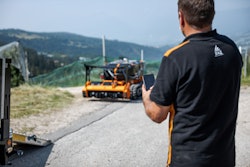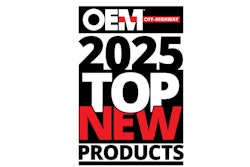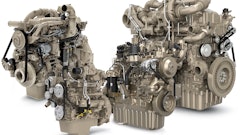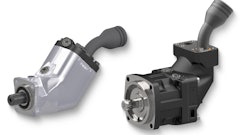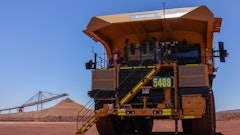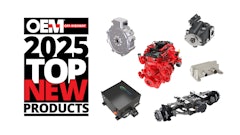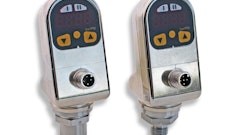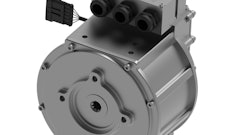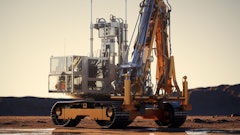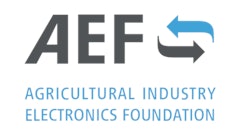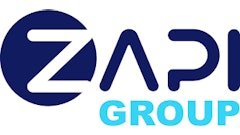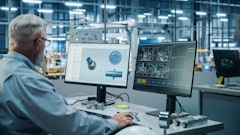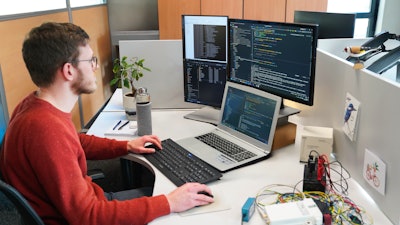
Within weeks of joining the off-highway industry as an electronic engineer 25 years ago, I quickly realized there was a cultural divide between the mechanical engineers, who had led the industry for decades, and the emerging software and controls engineers. This gap wasn't just about different technical domains; it was a clash of perspectives, priorities, and understanding.
A trickle of electronic innovation was rapidly becoming the first big wave of electronic and control implementation in the industry. Many components and subsystems were, independently, being fitted with control modules. Generally, the software was simple in scope, and there was some rudimentary data networking using CAN bus protocols.
At that time, the industry did not find it easy to make good decisions around software. For the familiar mechanical parts of engines, transmissions, and associated systems, quality was intuitive and tangible. When we held a mechanical component in our hand, we could instantly see and feel if it was well made, if it was of quality materials, and we had some confidence in whether it would function as intended. Software, however, was mysterious, and it was natural to be distrustful. The people who wrote that software were younger, more junior, and somehow different from the more experienced mechanical engineers.
Despite these hurdles, the industry managed to push through this first wave of innovation. By 2010, most machines featured multiple electronic controllers, with some exceeding ten modules. Yet, as complexity continues to rise, our existing processes for specifying, developing, testing, integrating, and maintaining software are insufficient for the demands of the near future. Today, not all software within a machine is under the original equipment manufacturer's (OEM’s) control. Many systems remain unconnected, and over-the-air (OTA) updates are rare, leaving gaps in functionality and user experience.
A Parallel Disruption: Software and Decarbonization
For the past several years, the industry has been focused on decarbonization, allocating significant budgets and engineering resources to electrification. However, I believe another transition is unfolding in parallel — one that will fundamentally change how machines are designed, used, and supported. This transition is the rapid evolution of onboard computing and software, which will become more connected, more sophisticated, and exponentially larger in scope.
 Figure 3: Electrification and software are tightly intertwined. FETIS Group
Figure 3: Electrification and software are tightly intertwined. FETIS Group
Lessons from Passenger Cars
Drawing lessons from passenger cars is not always straightforward, as what happens on-highway does not inevitably trickle down to off-highway. However, we can see similarities between the off-highway industry now and the state of major automotive OEMs just before the arrival of Tesla.
Dominant car giants such as VW, Ford, GM, Toyota and Hyundai had a piecemeal approach to software, rather than considering the whole system and the life cycle. They did not always own all the software, which often came “free” inside controllers supplied with components like transmissions, engines, and brakes. As experienced engineers know, there is not much in life as expensive as something that is “free.”
Today, a modern production car can have over 200 million lines of code, and despite having many hundreds of software engineers, passenger car OEMs do not write all the code themselves. Code that helps the OEM differentiate their products is often developed in-house, but much of the rest comes from software vendors, open-source projects, and collaborations. OEMs have fully accepted that software is critical to their survival and understand that the car is becoming “software-defined.”
It is unlikely that we will see software stacks with hundreds of millions of lines of code in off-highway machines in the next few years. Off-highway will also be slower to adopt AI due to challenges in obtaining sufficient high-quality training data for various machine applications. However, we can expect software stacks that are considerably larger and more sophisticated than those today. We need to think deeply about how to get there.
Why Change Is Coming: Rising Customer Expectations
A key driver of this transformation is customer expectations. Buyers of off-highway machines are also consumers in their personal lives. They’re accustomed to affordable, feature-rich devices from platforms like Amazon or eBay. If a $50 gadget can offer seamless connectivity and intuitive software, why shouldn’t a $100,000 machine do the same?
These expectations are rising faster than the industry’s ability to meet them. Customers want machines that are easier to use, safer, more efficient, and more integrated into their operations. They expect features like real-time diagnostics, OTA updates and advanced automation to become standard. The gap between what’s expected and what’s delivered creates both a challenge and an opportunity for OEMs.
The Challenge of Functional Safety
One key reason software in off-highway machines presents unique challenges is the requirement for functional safety. Unlike consumer-grade electronics, where occasional system crashes are tolerable, safety-critical systems in heavy machinery must operate reliably under all conditions. Functional safety standards, such as ISO 26262, require engineering rigour to ensure that systems can detect and neutralize faults before they lead to dangerous outcomes. These standards significantly increase the time, effort and expertise required to develop and test software.
Consider the example of power cycling. Decades ago, desktop computers often needed to be restarted multiple times a day due to crashes. Even today, we occasionally reboot modern devices. This level of reliability would be unacceptable for a multi-ton machine operating in high-risk environments. Achieving functional safety demands a combination of robust hardware, redundant systems and meticulous software design.
Collaborating with Technology Integrators
As software takes center stage, OEMs will need to collaborate more closely with suppliers and technology integrators. While in-house expertise will remain essential, external partnerships will play a critical role in areas like robotics, functional safety, power management, system architecture and connectivity.
At my current company, we’ve had the privilege of supporting OEMs as they navigate these challenges. By investing in key capabilities and fostering collaborative relationships, we aim to help our partners unlock the full potential of software-driven machines.
Embracing the Future
The off-highway industry stands at a crossroads. The convergence of software and decarbonization presents a once-in-a-generation opportunity to redefine how machines are designed, operated and maintained. Rising customer expectations and technological advancements make this transformation inevitable. By embracing software as a strategic asset, OEMs can not only meet these demands, but also position themselves as leaders in a rapidly evolving market.
The disruption is coming. The question is: Will we be ready?

